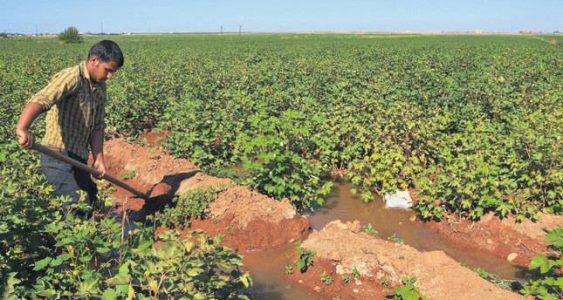
After the Islamic State the agricultural production struggles to recover in parts of Iraq
The Islamic State in Iraq and the Levant (ISIL) occupied large swathes of Iraqi territory between 2014 and 2017. The consequences of this occupation are still being felt in many rural areas where agricultural production was used as both a source of political propaganda and income, or destroyed as the group was forced out, a new IOM report says.
It is estimated that the group’s brutal three-year occupation reduced Iraq’s agricultural capacity by 40 per cent.
“It is necessary to prioritize the recovery and development of rural areas as part of our reconstruction and stabilization efforts,” said Siobhan Simojoki, Head of IOM Iraq’s Community Stabilization Unit.
“Agriculture should be considered as an essential facet of the stabilization process and focus on this area can help balance out longstanding rural-urban economic inequalities.”
The report, Rural Areas in Ninewa: Legacies of Conflict on Rural Economies and Communities in Sinjar and Ninewa Plains, published on 28 November focuses on agricultural output in Iraq’s third-largest governorate. Ninewa, in north-western Iraq, is also one of the country’s most fertile areas and has historically been the source of much of its grain and produce.
ISIL benefitted from the 2014 harvest completed in the months before taking over Ninewa; the group then profited from sales of the harvest and rain-fed crops, while forcing workers to continue operating agricultural infrastructure. Finally, as ISIL was being pushed out, fighting, abuse, and revenge destruction caused severe lasting damage to the agricultural sector in the governorate.
ISIL purposely targeted rural areas for strategic purposes, i.e., access to their own steady food supply and the option to sell off agricultural produce for financial gain, but their overuse and, in some cases, deliberate destruction of agricultural land has had long-term consequences on many rural areas. Almost two years after the military defeat of ISIL in Iraq, livestock are still missing in Ninewa, agricultural lands remain contaminated with explosives, and necessary machinery is lost or destroyed.
To date, many stabilization and post-crisis development efforts have targeted urban areas. Ninewa’s role in Iraq’s agricultural industry suggests that rebuilding agricultural livelihoods is an essential component to achieving successful stabilization in Iraq.
The presence of historically marginalized minorities in Ninewa’s rural areas is also of great importance, given the sensitivities of ethno-religious tensions related to land ownership; Ninewa Governorate is one of the most diverse in Iraq in terms of the number and prevalence of minorities. The new also report considers tensions in rural areas that have been worsened or ignited due to land and water policies, and agricultural decline under ISIL.
The studies conducted for this report were funded by USAID, within the framework of the project Supporting the Return of Displaced Populations in the Ninewa Plains and Western Ninewa.
Source: Relief Web





